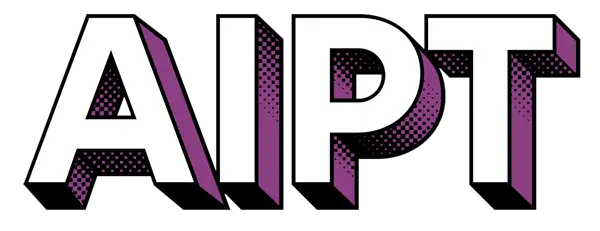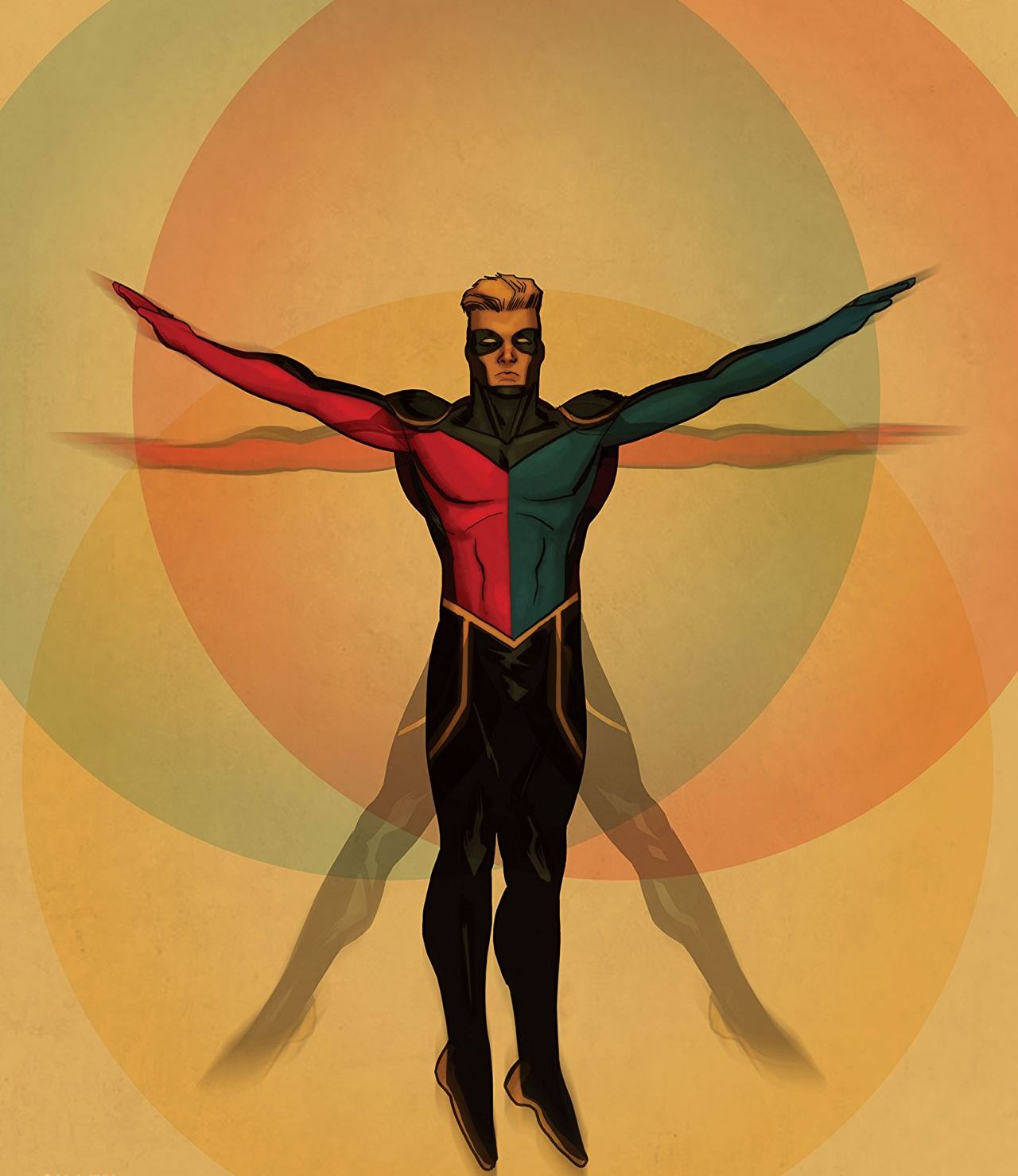[amazon_link asins=’B07LH8HS7G’ template=’AiPTProductAd’ store=’aiptcomics-20′ marketplace=’US’ link_id=’c4daab2c-f82a-11e8-881a-63c3ec7dce90′]
“This is not magic. This is…formalism.”
Peter Cannon is a book that wants to make you a better reader. It’s a story that wants to make you a more well-equipped reader, able to be like its protagonist, better able to see past the limits, the structures and assumptions. Fundamentally, it’s about formalism and it hopes to challenge pre-conceived notions in regards to it. Tackling Watchmen and the 9-panel grid it used so famously, the book is a gleeful answer and so much more. With an all-star assembly of talent in Kieron Gillen, Caspar Wijngaard, Mary Safro and Hassan Otsmane-Elhaou, it’s a bold look at superhero comics of both the past and present.

From the very first page, we’re treated to a shot of a meeting area with twelve seats. Instantly, one understands what the creative team is going for. Gillen has previously mentioned how, while the first issue is Warren Ellis, channeling a lot of The Authority, the second is more in the vein of Grant Morrison. And from the very first image, it’s hard to look at the table and not see Morrison and Porter’s JLA being alluded to. The Authority is a book that had significant impact upon superhero comics, but JLA is also another key book in the evolution of the modern superhero comic, especially when one is exploring the post-Watchmen landscape of comics. Tapping into the mythical ties of the DC catalog, Morrison and Porter recast them as a benevolent pantheon, playing with a set of 12 heroes, akin to the 12 gods of Olympus. So there’s all of that to be seen, but there’s also a whole lot more going on here. The page, as it’s laid out, is very much an homage to a page from Gillen’s own The Wicked + The Divine, which is a fun choice and again helps cement the mythical allusion a bit further.
But beyond that, the image works with its core concept: Watchmen. The table, alongside the seats, essentially is the twelve hours of the clock face (something the issue will later reinforce) and 12 is very much a sacred number when it comes to Watchmen. 12 issues of the story, which takes place across twelve weeks. There’s a lot of purpose and layers to every choice made in the book here. Every single detail has to be just right when one is attempting an endeavor as ambitious Peter Cannon surely is. Gillen’s take on frustrated and distant hero also comes through here, wherein the character is seemingly rather tired of having to deal with his peers. It’s almost as though he feels he’s an adult in a room full of children. Otsmane-Elhaou’s lettering delivers from the get-go as one might expect, as he adjusts to and represents every vocal change and slight nuance of Cannon’s eloquent speech to convey his state, providing key context.
 The book certainly wastes no time in getting meta-textual as one would hope, with Safro’s colors coming into sharp-focus immediately. Whether it’s the light green and fading white to accompany Peter’s thought, contrasting Baba Yaga’s confusion via pale blue and then jumping onto the scenes with Ozy Cannon (hey, there isn’t a name yet, so it is what it is) with the brighter shades of yellows and purples alongside retro-tinted screens, she pulls them all off effectively and makes it seamless. All of them serve the story effectively, from conveying the difference in state between Peter and other characters visually to visually establishing a different setting and also playing into the Watchmen-ties, heightening and adding to the story. Otsmane-Elhaou plays a key role here as well, channeling Dave Gibbons and lettering all characters of his world in that classic Gibbons Watchmen typeface, allowing the powerful contrasts and juxtaposition at the heart of the story to come through with every word that’s uttered. Even the text and color play to perfectly capture and express that essence and alongside Wijngaard’s incredibly clear storytelling, it works wonders.
The book certainly wastes no time in getting meta-textual as one would hope, with Safro’s colors coming into sharp-focus immediately. Whether it’s the light green and fading white to accompany Peter’s thought, contrasting Baba Yaga’s confusion via pale blue and then jumping onto the scenes with Ozy Cannon (hey, there isn’t a name yet, so it is what it is) with the brighter shades of yellows and purples alongside retro-tinted screens, she pulls them all off effectively and makes it seamless. All of them serve the story effectively, from conveying the difference in state between Peter and other characters visually to visually establishing a different setting and also playing into the Watchmen-ties, heightening and adding to the story. Otsmane-Elhaou plays a key role here as well, channeling Dave Gibbons and lettering all characters of his world in that classic Gibbons Watchmen typeface, allowing the powerful contrasts and juxtaposition at the heart of the story to come through with every word that’s uttered. Even the text and color play to perfectly capture and express that essence and alongside Wijngaard’s incredibly clear storytelling, it works wonders.
Ozy Cannon is an observer, a watcher, a reader, like the rest of us. And thus, when the book makes more explicit reference to Watchmen, like the above image with the table evoking the iconic button with the red smear, he grins. And that’s very much an encapsulation of Cannon. It’s cheeky, it’s self-aware, it’s confident and it’s going to address this beloved classic directly while providing its treatise on the superhero. It’s a conflict with the avatar of the iconic ’80s tale, sure, but it’s never mean-spirited and nor is it cruel. There’s a charm, a reverence and a general playfulness that accompany its decisions to take aim at Watchmen. But that’s only scratching the surface on the delightfully meta-textual work in here.
In what may be one of the most creative scenes in a superhero comic story, the book embraces the wild wonder of possibility. Ozy Cannon is convinced that travel through dimensions is impossible. He’s put the cast and crew in his neat grid to watch them as the mighty observer, but Peter is not Ozy. While they both share the ability to see and thus understand, Peter is open to that which Ozy is not. He consults his scrolls, which might as well be a collection of comics in this narrative and finds a solution to something that which Ozy feels is impossible.
Using formalism and the grid, in what is one of the most Animal Man scenes ever written with a licensed superhero, Cannon breaks past all limitations and accomplishes the impossible. In order to reach the realm of Moore, Peter Cannon utilizes the wisdom of Morrisonian texts, which is a rather fun way to read this. In any case, it’s very much a challenge, on what the 9-panel grid is, can accomplish and how it can be used in ways one hasn’t even conceived. And not just to Ozy, but to the reader. The book shows us a new, inventive way to use it, because as it puts it (in a sentence loaded with great meaning) “It’s all a matter of perspective.” With Otsmane-Elhaou’s lettering even emulating Watchmen‘s general title typeface but giving it a slightly messy and faded look, as words that feel like the final page of a book come right around the middle, the book makes its intent clear. There are still ways to push forward. Even statements such as “This level of formalism is dangerous, we could lose some people” are commentaries on the effects of formalism, as well as the grid, as the comic charges forth with full awareness and a feverish grin. It’s very much a comic that leaves you cackling with joy as it goes on and on.

Apart from that, the book also delves into the nature of Tabu and Cannon’s relationship and this is where things get really, really interesting. Wijngaard is not only a master of rigorous formalistic work, but also characterization. It’s very much the latter that lets the former bloom the way it does. When you’re under a grid, you pick what you choose to show more carefully than ever due to its inherent imposed limitations and so every panel has to count more than ever. Framing, body language and expression are all things Wijngaard nails, with Tabu’s nervous hand on his other arm as he talks to the pose of him as he departs, it’s all the little things that tell an entire story on their own. While the formalism will catch a lot of people’s eye, like with Peter’s own superheroics, it’s the little human stuff, which Tabu represents, that Wijngaard is a champion of.
The team clearly establishes that he’s no simple aid but an equal partner, in every sense, whilst also establishing where that’s gotten the two of them. They’re no longer involved romantically, very much due to Cannon’s own detachment from his humanity and how hard relationships are for him. But regardless, Tabu makes it clear how much Peter meant and still does mean to him and it’s all evident in his body language. The choice of making Cannon a queer hero is a really touching one and it’s refreshing to see more representation, especially done in work with such roaring ambition. Adding that layer to Peter’s story opens up a wealth of story potential and not just for him, but Tabu as well. It’s a push that’s very much in the right direction.

“To watch is to understand. To watch is to transform.” That is the ethos of Peter Cannon. It wants us to watch, like we watched the Watchmen and it wants us to understand, to transform. So keep your eyes peeled and observe, you’re bound to see something you never even imaged. This is where the impossible happens.
Join the AIPT Patreon
Want to take our relationship to the next level? Become a patron today to gain access to exclusive perks, such as:
- ❌ Remove all ads on the website
- 💬 Join our Discord community, where we chat about the latest news and releases from everything we cover on AIPT
- 📗 Access to our monthly book club
- 📦 Get a physical trade paperback shipped to you every month
- 💥 And more!














You must be logged in to post a comment.